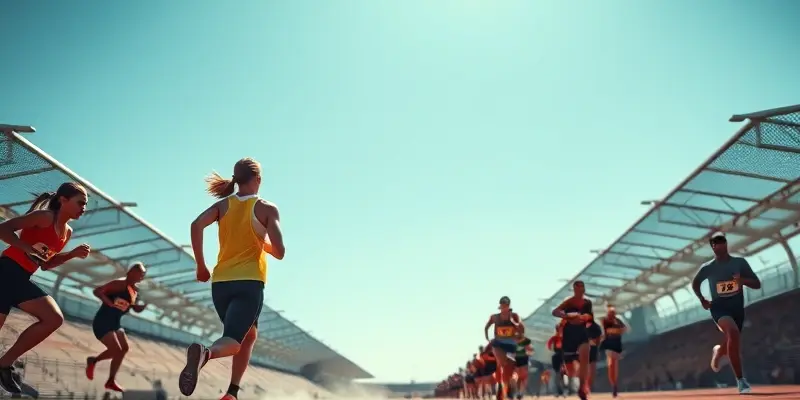Mastering Recovery & Injury Prevention: A Complete Guide for Every Athlete
Injury. Even the word stings—whether you’re just starting your fitness journey, chasing a new PR, or competing at the highest level. Injuries can derail progress, sap motivation, and leave you questioning your next move. But what if recovery could be smarter, faster, and safer? As a sports training expert and GymPulse Club contributor, I’m here to help you prevent setbacks and recover stronger. Let’s break down the essentials—from joint-protecting exercises to nutrition, tools, and the psychology of bouncing back.
Why Multi-Joint Movements Are Your Secret Weapon
Imagine building a house: a sturdy foundation supports every wall, beam, and window. In fitness, multi-joint movements (think squats, deadlifts, and presses) are that foundation. They recruit multiple muscles and joints, mimicking how we move in real life—lifting, twisting, jumping, and running.
Here’s why they matter:
- Injury prevention: Training squats, lunges, or push-ups strengthens not only the main muscles but also stabilizers, reducing your risk of injury.
- Efficiency: Multi-joint exercises build resilience across several body parts simultaneously—perfect for busy schedules.
- Better recovery: These movements reinforce good mechanics, helping ensure your body heals safely and comes back balanced after a setback.
Example: Instead of isolating your leg with leg extensions, a squat builds strong quads, glutes, hamstrings, and core stability at once—protecting knees and hips from overload.
Proactive Injury Prevention: Your Action Plan
No matter your sport or experience, injuries like ACL tears, hamstring strains, or shoulder troubles can happen. The good news? Most can be prevented with smart training. Here’s a quick guide:
| Common Injury | Prevention Focus | Key Movements ||———————-|————————————————–|—————————–|| ACL tears | Strengthen glutes/hamstrings & land safely | Squats, Lunges, Plyometrics || Rotator cuff strains | Shoulder stability & scapular control | Rows, Push-ups, Band work || Hamstring strains | Eccentric strength & flexibility | Nordic curls, Deadlifts || Low back pain | Core stability & hip mobility | Planks, Deadlifts, Bridges |
Action Step: Rotate these exercises into your routine, focusing on technique over ego. If possible, get feedback from a coach, or film your movements for form checks.
The Recovery Pyramid: Beyond Just Rest and Stretch
Most people think recovery equals stretching—or just taking days off. In reality, effective recovery is a three-step pyramid:
- Compression (foam rolling, massage) reduces muscle tension and boosts circulation.
- Friction (targeted soft tissue work) breaks up knots and scar tissue.
- Stretching (static and dynamic) restores range of motion and flexibility.
Use these methods together, not in isolation. For example, spend 5 minutes foam rolling, 2 minutes targeted stretching, and a quick round of light band work after intense training. Listen to your body—pain is information, not an enemy. Modify activities rather than quitting movement entirely.
Nutrition & Tools: Fueling Fast, Complete Healing
Injured tissues need the right building blocks and support to repair. Focus on:
- Protein: 1.6–2.2g/kg bodyweight per day helps rebuild muscle and connective tissue.
- Anti-inflammatories: Omega-3s (salmon, chia seeds), leafy greens, and berries fight inflammation naturally.
- Hydration & Collagen: Drink up and consider collagen plus vitamin C for joint support.
Tools that truly help:
- Foam rollers & massage balls: Use for daily tissue work.
- Compression sleeves: Great for reducing post-workout swelling.
- Massage guns: Ideal for deep muscle relief when used carefully.
Pro tip: Start simple. Even a basic foam roller and daily protein boost can make a measurable difference.
Motivation During Rehab: How to Stay on Track
Recovery isn’t just physical—it’s a mental game too. Here’s how to keep your spirit strong:
- Set small milestones, not just the end goal. Celebrate progress: today’s pain-free walk, tomorrow’s first push-up.
- Visualize success. Mental rehearsal preserves skills and confidence through visualization for healing.
- Lean on your support network. Coaches, friends, and even online communities (like GymPulse Club!) help you stay accountable and positive.
Call to Action: What recovery strategies have helped you? Share your experience below—let’s build a resilient community together.
Key Takeaways
- Build your workout foundation with multi-joint, functional movements.
- Combine prevention pillars: strength, agility, balance, and technique.
- Embrace the full recovery pyramid—compression, friction, and stretching.
- Eat with purpose and use helpful tools judiciously.
- Guard your motivation with mini-goals and community support.
Injury doesn’t have to stop you—it’s just another step in your fitness journey. Train smart, recover smarter, and support each other every step of the way.

